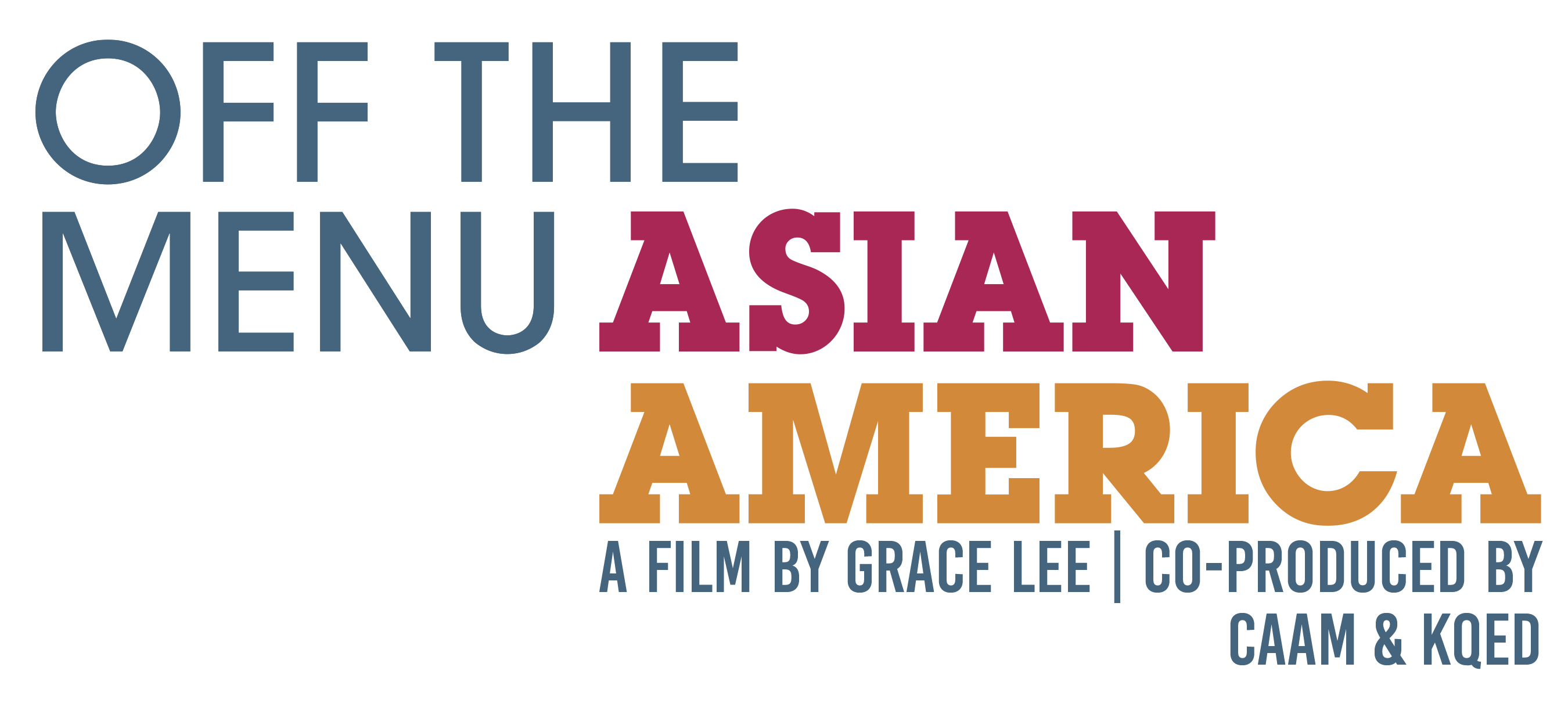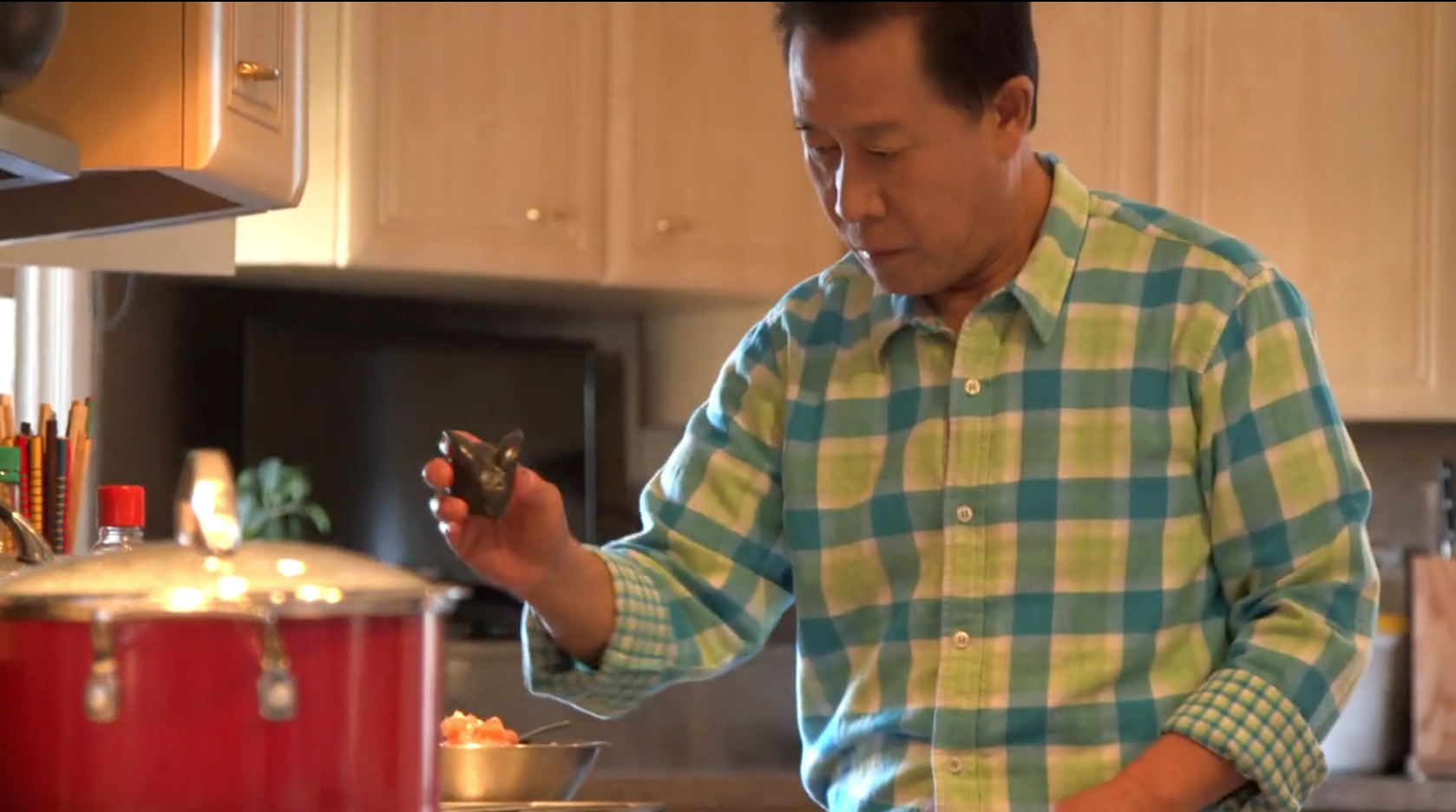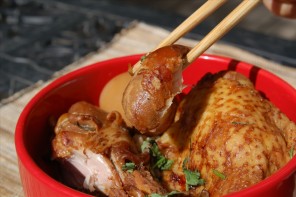Perhaps the most affectionate remembrance of life on the American home front during World War II is that of food: mock apple pies, margarine, victory gardens in which people grew their own vegetables, and patriotic self-denial. There was also grumbling, hoarding, and black marketing, but aside from the glow of nostalgia, historians like Lizzie Cunningham have shown that for the most part, Americans suffered very little from food rationing (especially in comparison to other nations fighting in WWII), and in certain areas, diets improved.
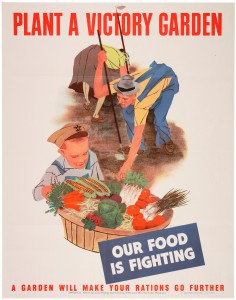
WWII poster. National Archives.
However, life was vastly different for the 120,000 Japanese Americans who were forcibly removed from their homes on the West Coast and incarcerated in makeshift camps inland, stretching from California to Arkansas. Imprisoned without trial, these Americans dealt with all the usual problems of institutional cooking and feeding for huge numbers of people, compounded by the hasty setup, rationing, hostile public scrutiny, and the difficulties of transporting shipments of food during wartime. While bad food obviously had an effect on morale and health, it also served as the battleground for several political issues swirling around the incarceration.
Incarcerees in the ten main camps as well as the other camps run by the INS uniformly remember how terrible the food was. Starches of all kinds, hot dogs, and applesauce are mentioned frequently in memoirs and interviews. Government requisitions and menus show that attempts were made to create balanced meals and to appeal to the palates of those who wanted Japanese food and those who wanted hamburgers and apple pie. However, rationing often led to unappealing offerings: beef hearts or tripe as part of the meat ration, for example.
Jeanne Wakatsuki Houston, in her famous memoir Farewell to Manzanar, described her first meal at the incomplete mess hall: “canned Vienna sausage, canned string beans, steamed rice that had been cooked too long, and on top of the rice a serving of canned apricots.” While this might sound sufficiently unappetizing, the time would come when all Americans would long for canned goods, which were being mostly reserved for military use. Incarceree Aiko Herzig-Yoshinaga, who later became a prominent figure during the 1980s campaign for reparations to Japanese American incarcerees, recalled in an oral history with Densho her anger and helplessness when her newborn daughter was allergic to powdered milk but there was no supply of canned milk. Because salaries were so low inside the camps, Herzig-Yoshinaga could not afford to buy it from outside, so her baby suffered immensely. “Most infants double their weight, birth weight, at six months. My child had not doubled her weight in a year, she was so sick,” she recalled.
The ten main camps developed massive agricultural and canning projects that helped to improve the menus; some had dairy and meat as well as produce farms already established in 1943. This had been intended from the beginning, using the farming expertise of the Japanese American community to improve undesirable land, but Congress put more pressure on the camps to become self-sustaining as the public outcry over rationing grew. Small individual or school victory gardens developed as well; incarcerees were also encouraged to leave the camps to help harvest or work as tenant farmers inland.
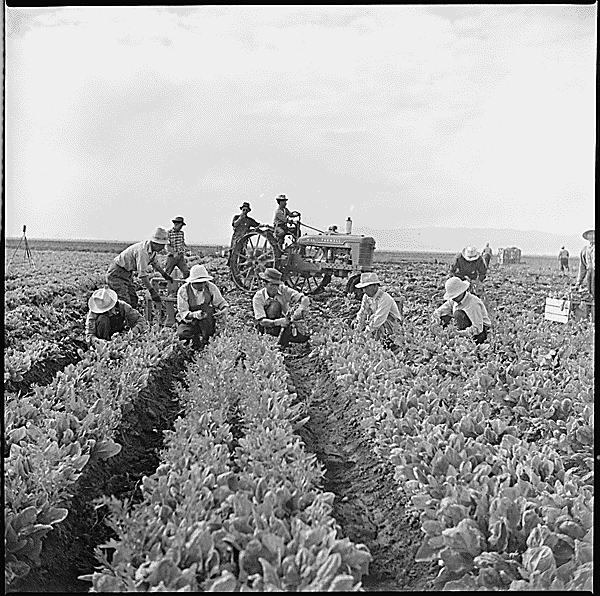
While most Americans outside were able to come up with ingenious savings and recipes in their own kitchens, the camps featured mass kitchens and one menu only. Mess halls were built to serve 300 people and featured standard tables and benches as well as plain institutional tableware. Each hall had a dedicated cooking and dishwashing staff of incarcerees, often inexperienced, who were paid the standard $16 (skilled) or $12 (unskilled) per month. Rudy Tokiwa, who later became a decorated veteran of the all-Japanese American 442nd Regimental Combat Team and an important lobbyist during the reparations campaign, became a cook at the age of sixteen and endured long hours in the stifling heat of the kitchens in Poston, Arizona. “Always standing in front of a coal-burning stove, and the damn temperature outside is 112, 114 degrees,” he recalled in his Densho oral history. On the other side of the counter, incarcerees lined up at mealtimes, enduring long waits and inclement weather, and by most accounts, ate quickly and departed as soon as possible. Food as a place of community became a rare privilege, made difficult by rationing—there were no provisions made initially for food for parties and special occasions, and these had to be approved individually.
A 1943 government pamphlet distributed to the general public, “Relocation of Japanese-Americans,” included several photographs, headed by a full-page frontispiece of a young woman sewing on an American flag. While some, like a photo of a family with several cute children, show normalcy, others are meant to emphasize to the public that the Japanese Americans were not being pampered at their expense, a constant rumor that even sparked Congressional investigations that year. A Dorothea Lange photo of a Manzanar camp mess hall carried the reassuring caption, “Meals are served cafeteria style at an average food cost of not more than 45 cents per person per day.” Indeed, camp administrators constantly sought to bring costs significantly lower. The “cafeteria style” meals, portrayed as a financial compromise that still allowed the family in the front of the photo to eat together, were also seen as the heart of the camp problem for incarcerees and the government administrators and sociologists, as well as sympathizers.
The mess hall became the frequently cited cause of family deterioration during the incarceration, both during wartime and afterwards. The 1980s Congressional Committee on the Wartime Relocation and Internment of Civilians (CWRIC) mentioned in their report, later published as Personal Justice Denied, “The community feeding weakened family ties. At first families tried to stay together; some even obtained food from the messhall and brought it back to their quarters in order to eat together. In time, however, children began to eat with their friends.” The walk back and forth, sometimes considerable for small children or the elderly, also sometimes caused families to eat separately as someone stayed behind. However, while the plight of people denied the sacred family table was often used to gain sympathy for Japanese Americans during the war, it was also used to ignore a difficult discussion of politics or racism in favor of a more sentimental topic.
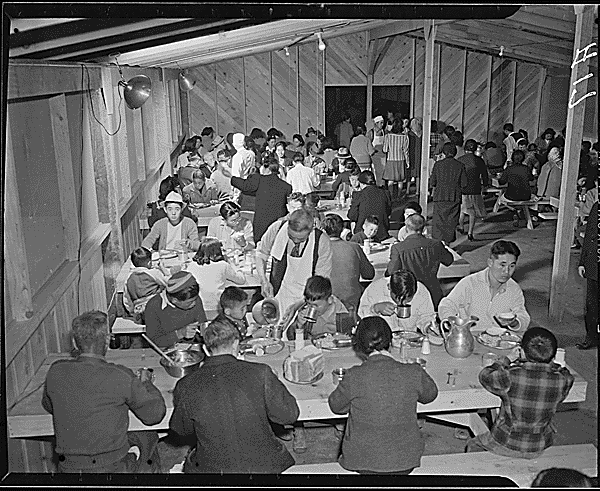
Incarcerees pushed back against the poor conditions and food. Discontent with rations erupted in violence at a few of the camps, serving as a cause that rallied the incarcerees’ feelings of anger and mistreatment. In one famous episode at the Manzanar camp, incarceree Harry Ueno suspected that the marked decreases in sugar were not just from rationing, but from the theft and black market sale by administrators of the Japanese Americans’ sugar supply. (Administrators were separately fed and rationed.) This and other tensions among the incarcerees led to the famous December 1942 uprising within Manzanar. Ueno’s arrest for the alleged beating of an incarceree active with the Japanese American Citizens League, which some had accused of collaborating with the government, inflamed many, who saw it as retribution for Ueno’s sugar accusations; the military police fired on an angry crowd and killed two. Ueno’s suspicions that food was being sold on the black market were repeated by incarcerees at other camps; to what extent that happened, or what losses were due to spoilage or wastage, is hard to say.
Stories have also surfaced of the ways that Japanese Americans worked around rationing and the barbed wire fences to get better food. The documentary The Manzanar Fishing Club (2012) describes how incarcerees sneaked out of camp to go fishing, as much to take back some freedom and personal agency as to get fresh fish. Kenneth Tashiro, in his published memoir entitled “Wase Time!”, remembers his family buying chicken from Native Americans peddlers in the Gila River camp; they would manage to cook chicken teriyaki on their tiny barrack stove. Eventually, as with so many other aspects of camp life, it was the incarcerees’ own labor and ingenuity that improved their situation, but the memory of food during WWII remains a painful one for these Americans.
+ + +
A portion of this piece was taken from the essay “Incarceration, Cafeteria-Style” in Eating Asian America: A Food Studies Reader (NYU Press, 2013).
Heidi Kim is an associate professor of English and Comparative Literature at the University of North Carolina at Chapel Hill. She writes and speaks extensively on the literature and history of the Japanese American incarceration. Among her publications is the edited Hawai’i memoir Taken from the Paradise Isle: The Hoshida Family Story (UP Colorado, 2015), which incorporates the family artwork, photos, and letters to tell the tragic story of their separation and incarceration on the mainland during the war. Follow her on Twitter or read more about her here.
 This story is a part of Off the Menu: Asian America, a multimedia project between the Center for Asian American Media and KQED, featuring a one-hour PBS primetime special by award-winning filmmaker Grace Lee (American Revolutionary: The Evolution of Grace Lee Boggs), original stories and web content.
This story is a part of Off the Menu: Asian America, a multimedia project between the Center for Asian American Media and KQED, featuring a one-hour PBS primetime special by award-winning filmmaker Grace Lee (American Revolutionary: The Evolution of Grace Lee Boggs), original stories and web content.
